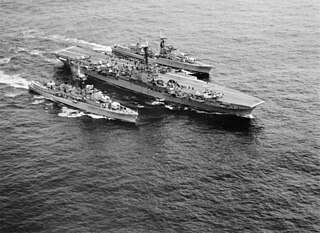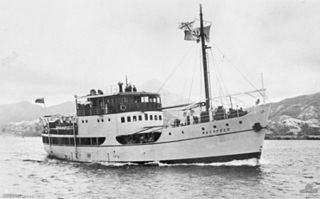
HMAS AE1 was an E-class submarine of the Royal Australian Navy (RAN). She was the first submarine to serve in the RAN, and was lost at sea with all hands near what is now East New Britain, Papua New Guinea, on 14 September 1914, after less than seven months in service. Search missions attempting to locate the wreck began in 1976. The submarine was found during the 13th search mission near the Duke of York Islands in December 2017.

Clarence City Council is a local government body in Tasmania, and one of the five municipalities that constitutes the Greater Hobart Area. The Clarence local government area has a population of 56,945, covering the eastern shore of the Derwent River from Otago to the South Arm Peninsula and the smaller localities of Cambridge, Richmond, and Seven Mile Beach.
Kingborough Council is a local government body in Tasmania, and one of the five municipalities that constitutes the Greater Hobart Area. Kingborough is classified as an urban local government area and has a population of 37,734, it covers the transition from the southern urban areas of Hobart through Kingston, as well as encompassing Bruny Island.

Cataraqui was a British barque which sank off the south-west coast of King Island in Bass Strait on 4 August 1845. The sinking was Australia's worst ever maritime civil disaster incident, claiming the lives of 400 people.
Rosny College is a government comprehensive senior secondary school located in Rosny Park, a suburb of Hobart, Tasmania, Australia. Established in 1973, the college caters for approximately 1,000 students in Years 11 and 12. The college is administered by the Tasmanian Department of Education.

The Bass Strait Triangle is the waters that separate the states of Victoria and Tasmania, including Bass Strait, in south-eastern Australia. The term Bass Strait Triangle appears to have been first used following the Valentich Disappearance in 1978 although the region had a bad reputation long before that.

HMAS Voyager was a Daring-class destroyer of the Royal Australian Navy (RAN), that was lost in a collision in 1964.

HMAS Armidale (J240), named for the then town of Armidale, New South Wales, was one of 60 Bathurst-class corvettes constructed during World War II, and one of 36 initially manned and commissioned solely by the Royal Australian Navy (RAN).
Neva was a three-masted barque launched in 1813. She made two voyages transporting convicts to Australia. On her second voyage carrying convicts she wrecked in Bass Strait on 13 May 1835. Her loss was one of the worst shipwrecks in Australian history; 224 people died.

George III was a British penal transportation convict ship launched in 1810 in London. She was wrecked while transporting convicts from England to the Australian Colonies. She was wrecked in the southern end of the D'Entrecasteaux Channel, Van Diemen's Land; 134 of the 294 people on board died.

SS Lake Illawarra was a handysize bulk carrier of 7,274 tons in the service of the Australian National Line. This ship is known for causing the Tasman Bridge disaster when she collided with pylon 19 of Hobart's giant high concrete arch style Tasman Bridge on the evening of 5 January 1975 at 9.27 pm, resulting in the deaths of 12 people.

Rose Bay is a suburb of the City of Clarence in greater Hobart, capital city of Tasmania, Australia. Rose Bay is a small suburb, making up only approximately 0.9 square kilometres with nearly one fourth of that area (23.2%) being parkland. At the 2016 Census the suburb recorded a population of 1,102 people.

Triabunna is a rural residential locality in the local government area (LGA) of Glamorgan–Spring Bay in the South-east LGA region of Tasmania. The locality is about 86 kilometres (53 mi) north-east of the city of Hobart. The 2021 census has a population of 905 for the state suburb of Triabunna.

HMAS Matafele was a small cargo and passenger vessel which was operated by Burns Philp from 1938 to 1942 and the Royal Australian Navy (RAN) from 1943 until she was lost with all of her crew as a result of an accident in June 1944.

Rockingham Naval Memorial Park is a military memorial in the City of Rockingham, Western Australia, dedicated to the Royal Australian Navy. It contains a number of commemorative plaques, a 110 mm (4.5 in) gun turret from HMAS Derwent and a submarine fin from HMAS Orion.

Buckland is a rural locality in the local government area (LGA) of Glamorgan–Spring Bay in the South-east LGA region of Tasmania. The locality is about 25 kilometres (16 mi) south-west of the town of Triabunna. The 2016 census has a population of 179 for the state suburb of Buckland. It is a village on the Tasman Highway. It contains a historic church, St John the Baptist church.

HMAS Goorangai was a 223-ton auxiliary minesweeper of the Royal Australian Navy (RAN). She was built in 1919 for the Government of New South Wales, then sold in 1926 to the fishing company Cam & Sons. The trawler was requisitioned for military service following the outbreak of World War II, converted into a minesweeper, and assigned to Melbourne. She was sunk in an accidental collision with MV Duntroon in 1940, becoming the RAN's first loss of World War II, and the first RAN surface ship to be lost in wartime.
Dunalley is a rural / residential locality in the local government areas (LGA) of Sorell (37%) and Tasman (63%) in the South-east LGA region of Tasmania. The locality is about 31 kilometres (19 mi) south-east of the town of Sorell. The 2016 census recorded a population of 316 for the state suburb of Dunalley. It is a small fishing village on the east coast of Tasmania.

The vessel MV Blythe Star was a coastal freighter which foundered off south-western Tasmania in October 1973, leading to the largest maritime search operation conducted in Australia to that time. No sign of the vessel was ever found. The crew of ten successfully took to a small inflatable liferaft, but it was not until after 11 days and the deaths of three seamen that the survivors were found ashore in rugged terrain near Deep Glen Bay on Tasmania's south east coast. As a result of this tragedy, the AUSREP maritime position reporting system was introduced to the Australian Navigation Act.






















